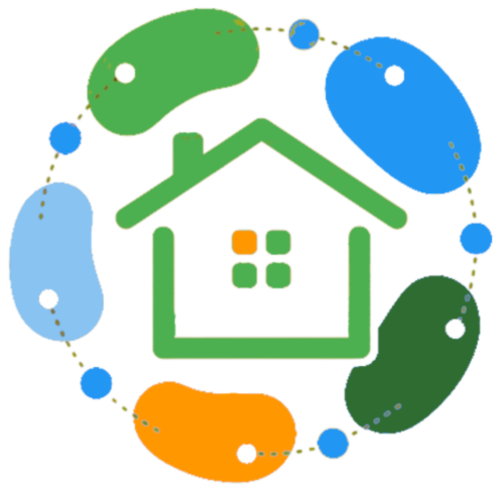The Morning Routine That Actually Works for Busy Families
It’s 7:45 AM. School starts at 8:15. Your 8-year-old can’t find his shoes. Your 10-year-old just remembered she needs poster board for a project due today. Your 5-year-old refuses to wear anything but his Halloween costume. You haven’t had coffee yet.
This is not the calm, Pinterest-worthy morning you imagined.
Here’s the morning routine that works for real families—no perfect Instagram photos required. 💚
Why Most Morning Routines Fail
The Pinterest Problem
You’ve seen those morning routine charts:
- 5:30 AM: Wake up refreshed ☀️
- 5:45 AM: Meditation and journaling 🧘
- 6:00 AM: Prepare nutritious breakfast 🥗
- 6:30 AM: Gentle wake-up for children
- 7:00 AM: Family breakfast conversation
- 7:30 AM: Everyone dressed and ready, peacefully heading to school
The Reality:
- 6:45 AM: Hit snooze for the 3rd time
- 7:00 AM: Wake kids (they’re grumpy)
- 7:15 AM: “Where are my shoes? What’s for breakfast? I don’t want to wear that!”
- 7:40 AM: Scramble to find backpacks, lunches, permission slips
- 8:10 AM: Rush out the door, something’s forgotten, everyone’s stressed
You’re not failing—those Pinterest routines were created by people who don’t have your life.
The 3 Rules of Morning Routines That Work
Rule #1: Start the Night Before
What works: ✅ Evening prep cuts morning chaos in half
- Lay out clothes the night before (kids choose, you approve)
- Pack backpacks after homework is done
- Make lunches before bed (or buy lunch—no judgment!)
- Put shoes/coats by the door
- Set breakfast items on counter (bowls, cereal, bread for toast)
The 10-Minute Evening Routine:
7:30 PM: After dinner cleanup
- Kids pick tomorrow's outfit (5 min)
- Pack backpacks, check for forms/homework (3 min)
- Set out breakfast items (2 min)
Done by 7:40 PMWhy it works: You’re trading 10 calm evening minutes for 30 chaotic morning minutes. Worth it.
Rule #2: Visual Schedules (Not Verbal Nagging)
What works: ✅ Kids can see what’s next (they don’t rely on you telling them)
Options:
- Picture checklist for ages 3-7 (brush teeth, get dressed, eat breakfast)
- Written checklist for ages 8+ (with checkboxes they mark themselves)
- Digital display showing morning tasks (rotates through kids’ names)
- Magnetic board with move-able task cards
The Game-Changer: When kids ask “What do I do next?” you say: “Check the chart.”
Not nagging. Not repeating yourself. Just: “Check the chart.”
Why it works:
- Transfers mental load OFF you
- Builds independence in kids
- Reduces power struggles (“The chart says it, not me!”)
- Visual learners (most kids) do better with images than instructions
Rule #3: Buffer Time = Sanity
What works: ✅ Build in 15 extra minutes you don’t “need”
Example:
- School starts: 8:15 AM
- You “should” leave: 8:00 AM
- You PLAN to leave: 7:45 AM
Those 15 minutes absorb:
- Can’t find the water bottle
- Last-minute bathroom trip
- Meltdown over socks feeling “weird”
- Forgotten homework on printer
Why it works: When you plan for things to go wrong, you stay calm when they do.
The FamilyCast Morning Routine Framework
Phase 1: The Night Before (10 minutes)
After Dinner (7:30-7:40 PM):
- Kids pick tomorrow’s clothes (lay out on chair/dresser)
- Pack backpacks (homework, folders, library books)
- Prepare lunch items (or put lunch money in backpack)
- Set out shoes/coats by door
- Put breakfast items on counter
Parent Task:
- Check family calendar for tomorrow (early meetings? After-school stuff?)
- Set coffee timer (wake up to ready coffee = win)
Phase 2: Morning Launch (6:45-7:00 AM)
Parent Wake-Up (6:45 AM):
- Get yourself ready FIRST (you can’t pour from an empty cup)
- Quick bathroom/dressed/coffee
- Turn on kitchen lights, start breakfast
Why parent-first: When you’re calm and dressed, you can handle kid chaos. When you’re rushing too, everyone melts down.
Phase 3: Kid Wake-Up (7:00-7:30 AM)
Wake-Up Strategy (7:00 AM):
- ⏰ Alarm clock in kids’ rooms (not you as the alarm)
- 💡 Turn on bedroom lights (natural wake-up cue)
- 🎵 Play upbeat music (Spotify family playlist)
The Morning Checklist (Kids follow independently):
- Get dressed (clothes already picked out)
- Brush teeth
- Comb hair
- Come to breakfast
Parent Role:
- Monitor (not micromanage)
- Offer help if truly stuck
- Praise progress (“You’re dressed already! Great job!”)
Visual Tool: FamilyCast displays morning checklist on kitchen screen. Kids see their name, tasks, checkmarks. Builds independence.
Phase 4: Breakfast & Final Prep (7:30-7:45 AM)
Simple Breakfast Options (15 minutes max):
- Cereal + fruit + milk
- Toast with peanut butter + banana
- Yogurt + granola + berries
- Oatmeal (instant) + toppings
- Bagel + cream cheese
Hot tip: “Breakfast for dinner” the night before = leftovers for breakfast (pancakes, scrambled eggs, etc.)
Final 5 Minutes (7:40-7:45 AM):
- Backpacks on
- Shoes on
- Coats (if needed)
- Water bottles filled
- Everyone to the car/bus stop
Phase 5: Out the Door (7:45 AM)
Buffer Time in Action:
- You’re ready to leave at 7:45 AM
- School starts at 8:15 AM
- 15-minute buffer = arrive 8:00 AM (calm, on time)
Celebration: You did it! No yelling, no chaos, everyone arrived in one piece.
Age-Specific Morning Routine Adjustments
Ages 3-5 (Preschool)
Realistic Expectations:
- They need help with almost everything
- Getting dressed takes 10-15 minutes (not 3)
- They’ll get distracted by toys, pets, dust particles
What Works:
- ✅ Picture checklist (get dressed, brush teeth, eat breakfast)
- ✅ Choice-based motivation (“Do you want cereal or toast?”)
- ✅ Make it fun (race to see who can get dressed first—you or them!)
- ✅ Prepare for meltdowns (keep extra time for emotions)
Parent Involvement: High (but teach independence where you can)
Ages 6-9 (Elementary)
Realistic Expectations:
- Can do most tasks independently with reminders
- Easily distracted (will read a book instead of getting dressed)
- Need help with time management (“You have 10 minutes!”)
What Works:
- ✅ Visual checklist (words + pictures)
- ✅ Timers (“You have 10 minutes to get dressed—set your timer!”)
- ✅ Reward system (all tasks done before 7:30 = 5 min screen time)
- ✅ Natural consequences (“No time to finish breakfast? Bring a granola bar for the car”)
Parent Involvement: Medium (check-ins, not constant hovering)
Ages 10-13 (Tweens)
Realistic Expectations:
- Capable of total independence (if systems support them)
- Resistance to “being told what to do” (autonomy is important)
- Will sleep through alarms if allowed
What Works:
- ✅ Alarm clock responsibility (their job to wake up)
- ✅ Natural consequences (late = tardy slip, no rescue)
- ✅ Minimal nagging (“Check your list” instead of “Did you brush your teeth?”)
- ✅ Phone notifications (if they have a phone)
Parent Involvement: Low (trust + verify, hands-off supervision)
Ages 14+ (Teens)
Realistic Expectations:
- Fully capable but will test boundaries
- Want total autonomy
- Late-night habits make mornings harder
What Works:
- ✅ Complete ownership (they set alarm, get themselves ready)
- ✅ Bare minimum parent involvement (“Are you up?” text if no movement by 7 AM)
- ✅ Natural consequences (miss the bus = they problem-solve transport)
- ✅ Respect privacy (no barging into bedrooms)
Parent Involvement: Minimal (emergency backup only)
Common Morning Battles (And How to Win Them)
Battle #1: “I Can’t Find My Shoes!”
Why it happens: Shoes come off randomly (car, living room, backyard, under bed)
The Fix: ✅ Shoe basket by the door (shoes go there IMMEDIATELY after coming home) ✅ One pair per kid during school week (fewer choices = less chaos) ✅ Natural consequence: Can’t find shoes? Wear the backup pair (even if they’re “uncool”)
Battle #2: “I Don’t Want to Wear That!”
Why it happens: They changed their mind, or you picked something they hate
The Fix: ✅ Let kids pick the night before (you approve, but they choose) ✅ 5-item wardrobe (for young kids: 5 outfits they like, rotate Mon-Fri) ✅ Weather app check (together the night before: “It’ll be cold tomorrow, pick long sleeves”) ✅ Natural consequence: They wear what they picked (even if they regret it)
Battle #3: “What’s for Breakfast?”
Why it happens: Decision fatigue + no prep = chaos
The Fix: ✅ Monday-Friday breakfast menu (same every week: Mon = cereal, Tue = toast, etc.) ✅ Self-serve station (bowls, spoons, cereal on low shelf kids can reach) ✅ No cooking on school days (save pancakes for weekends)
Sample Week:
- Monday: Cereal + fruit
- Tuesday: Toast + peanut butter
- Wednesday: Yogurt + granola
- Thursday: Bagel + cream cheese
- Friday: Oatmeal + toppings (or “Breakfast Friday”—their choice)
Battle #4: “I Forgot My [Homework/Lunch/Permission Slip]!”
Why it happens: Packed last-minute, poor systems, not checking backpacks
The Fix: ✅ Backpack packing ritual (every night after homework, before screen time) ✅ Visual checklist: What goes in backpack (homework folder, lunch, water bottle, library book if due) ✅ Hook by door (backpack hangs there after packing—can’t leave without seeing it) ✅ Natural consequence (for older kids): Forgot lunch? You’re buying or going hungry. (They learn fast.)
Quick Wins You Can Try Tomorrow
Tonight (10 minutes):
- ✅ Lay out tomorrow’s clothes with kids
- ✅ Pack backpacks and set by door
- ✅ Put breakfast items on counter
Tomorrow Morning:
- ⭐ Wake yourself up 15 minutes earlier (calm you = calm family)
- ⭐ Turn on upbeat music instead of yelling to wake kids
- ⭐ Use “check the list” instead of nagging
This Week:
- 🎯 Create a visual morning checklist (pictures or words)
- 🎯 Add 15-minute buffer to your “leave time”
- 🎯 Institute evening prep as non-negotiable routine
How FamilyCast Makes Mornings Easier
What Families Love:
- Morning checklist visible to everyone (kids see tasks without asking you)
- Updates in real-time (check off tasks, see progress)
- Age-appropriate displays (pictures for little ones, text for older kids)
- Evening prep reminders (7:30 PM notification: “Time to pack backpacks!”)
- Schedule sync (see morning activities, after-school pickups, everyone’s on same page)
How it works:
- Mount tablet in kitchen
- Set up morning checklist (one-time, takes 10 minutes)
- Kids check tasks and mark complete
- You manage from phone if needed (update tasks, add reminders)
- Everyone knows what to do, stress-free mornings! 💚
Try FamilyCast Free for 14 Days →
Remember This 💚
- Perfect mornings don’t exist—aim for “good enough” and everyone arriving safely
- Start the night before—10 evening minutes saves 30 morning minutes
- Visual systems work better than verbal nagging (for you AND your kids)
- Build in buffer time—things will go wrong; plan for it
- Age-appropriate expectations—what works for a 6-year-old doesn’t work for a 13-year-old
- Give yourself grace—some mornings will still be chaos, and that’s okay
The Bottom Line: A morning routine that works isn’t about perfection—it’s about systems that support your real family in your real life.
You’re Doing Great!
Seriously. You showed up, you’re trying to improve mornings for your family, and that counts. Drop a comment and tell us: What’s your biggest morning struggle? Let’s help each other! 💬
Ready for calmer mornings? Join our beta and get 50% off FamilyCast for 3 months. Start tomorrow with a system that actually works. 💚
More Family Organization Resources
- 📖 Why Your Paper Chore Chart Isn’t Working
- 🎯 Age-by-Age Guide: Chores Your Kids Can Handle (Coming Oct 18!)
- 💡 Free Printable Morning Routine Checklist
Related Topics: family morning routine, morning routine for kids, busy family schedules, school morning routine, family organization tips

